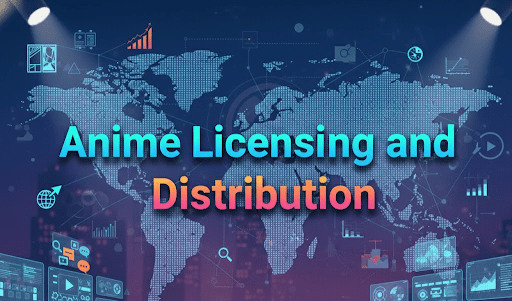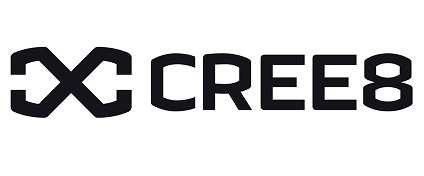Mastering Anime Licensing and Distribution: A Strategic Guide

Introduction
The global appetite for anime has exploded, transforming a once-niche art form into a multi-billion-dollar pillar of the mainstream entertainment industry. For content executives, producers, and distributors, this surge presents a significant opportunity.
However, navigating the intricate web of anime licensing and distribution requires a specialized understanding of its unique market dynamics, complex rights structures, and fragmented ecosystem.
Successfully bringing a title from a Japanese production committee to a global audience is a high-stakes process demanding strategic precision, deep market intelligence, and the right network of partners. This guide provides a strategic framework for mastering this complex landscape.
Table of content
- Understanding the Modern Anime Licensing and Distribution Landscape
- The Core Challenges in Anime Licensing and Distribution
- Key Players in the Anime Distribution Value Chain
- A Strategic Framework for Acquiring and Distributing Anime
- How Vitrina Accelerates Anime Licensing and Distribution
- Conclusion
- Frequently Asked Questions
Key Takeaways
| Core Challenge | Navigating the fragmented and opaque ecosystem of anime rights holders, regional regulations, and distribution channels to secure profitable content deals. |
| Strategic Solution | Implementing a data-informed approach to identify and vet partners, understand territorial rights, and streamline the acquisition and distribution workflow. |
| Vitrina’s Role | Vitrina provides a centralized intelligence platform to track the anime supply chain, identify key rights holders, and connect with verified distribution partners globally. |
Understanding the Modern Anime Licensing and Distribution Landscape
The business of anime extends far beyond Japan, with international markets now accounting for a substantial portion of its total value. The global anime market is projected to experience continued growth, driven by the proliferation of streaming platforms and a dedicated international fanbase.
According to a report by Grand View Research, the global anime market size was valued at USD 28.61 billion in 2022 and is expected to grow significantly.
This expansion is fueled by an insatiable demand for new content, creating immense opportunities for distributors who can successfully navigate the licensing process.
This process is fundamentally different from that of Western content. The rights for a single anime title are often held by a “production committee” (seisaku iinkai), a consortium of companies that co-finance the project.
This committee can include manga publishers, TV networks, toy manufacturers, and music companies. Licensing a title requires negotiating with this committee, or more commonly, with the international distribution company appointed to represent them.
The complexity of these deals requires a deep understanding of who holds which rights for specific territories and platforms, a challenge that defines the modern distribution landscape.
The Core Challenges in Anime Licensing and Distribution
While the market is lucrative, securing anime content is fraught with complexities. The primary obstacle is the fragmented and often opaque nature of the rights-holding landscape.
Identifying the correct entity within a production committee that controls international distribution rights can be a significant research undertaking. This is further complicated by pre-existing exclusive deals and regional restrictions that carve up global rights into a patchwork of territories.
Furthermore, competition is fierce. Major global streaming platforms like Netflix and Crunchyroll are investing heavily in exclusive licenses and original productions, driving up acquisition costs.
According to a 2023 article in Variety, licensing a popular, in-demand anime series for exclusive streaming rights in a major market like North America can cost anywhere from $100,000 to over $1,000,000 per season.
This high cost of entry makes it critical for buyers to have confidence in a title’s market potential. For sellers, finding the right platform that can maximize a title’s reach and revenue potential across different windows—from theatrical to SVOD to AVOD—is a strategic imperative that requires a global view of the market.
Key Players in the Anime Distribution Value Chain
Successfully operating within the anime market requires understanding the roles of its key participants. The ecosystem is a complex network of creators, financiers, and distributors, each playing a critical role in bringing content to a global audience.
The Production Committee
As mentioned, this consortium is the ultimate rights holder for most anime. Comprised of multiple stakeholders who have invested in the production, their primary goal is to mitigate financial risk and share in the profits from all licensing avenues, including broadcast, streaming, merchandise, and home video. Engaging with them often requires navigating a complex hierarchy of decision-makers.
International Distributors
Companies like Toei Animation, VIZ Media, and Aniplex are titans in this space. They often act as the sales agent for production committees, managing the international licensing of titles to various platforms and broadcasters.
These distributors are the gatekeepers for much of the premium content flowing out of Japan and are essential partners for any international acquisition executive. Finding the right distributor for your target genre or market is a crucial first step.
Streaming Platforms and Broadcasters
The final destination for most licensed anime. This category includes global giants like Crunchyroll and Netflix, as well as regional players and national broadcasters. Each platform has a distinct content strategy, target demographic, and rights requirement. For distributors, matching a title to the right platform is key to maximizing its commercial success.
Localization and Post-Production Vendors
These partners are essential for adapting anime for international audiences. This includes subtitling, dubbing, and cultural consulting to ensure the content resonates with local viewers. The quality of localization can significantly impact a title’s reception and is a critical component of the distribution supply chain.
A Strategic Framework for Acquiring and Distributing Anime
A successful anime licensing strategy is built on a foundation of robust market intelligence and efficient execution. Executives should adopt a structured approach to identify opportunities, manage negotiations, and bring content to market effectively.
First, define your content acquisition strategy. Are you targeting high-profile simulcast titles, classic catalog series, or niche genres with a dedicated following? Your strategy will dictate the partners you engage with and the licensing terms you pursue.
This requires a clear understanding of your platform’s audience and market position. Use data to identify content gaps in your existing catalog and track upcoming productions that align with your strategic goals.
Second, conduct thorough due diligence. Before entering negotiations, it is critical to understand the full scope of the rights available. This includes verifying the territories, platforms (SVOD, AVOD, TV, etc.), and duration of the license.
An essential part of this process is identifying all stakeholders in the production committee and understanding any existing licensing deals that may impact your desired rights. This intelligence protects your investment and prevents costly legal entanglements.
Finally, build a global network. The anime industry is relationship-driven. Developing strong connections with Japanese production companies, international distributors, and key streaming executives is paramount.
This network provides access to deal flow and market insights that are not publicly available. Platforms that facilitate these connections are invaluable for building the necessary relationships to succeed.
An efficient way to do this is by utilizing a professional network and data platform like Vitrina to connect with key players in the distribution and licensing ecosystem.
How Vitrina Accelerates Anime Licensing and Distribution
In a market defined by fragmentation and complexity, Vitrina provides the clarity and connectivity needed to execute a successful anime strategy. The platform is designed to address the core challenges faced by both buyers and sellers in the anime supply chain.
For content acquisition executives, Vitrina offers a real-time Project Tracker that provides early warnings on anime titles in development and production. This allows buyers to get ahead of the competition and engage with rights holders at the earliest stages. The platform’s extensive database of companies and executives provides verified contact information for key players, from Japanese production committees to international distributors, streamlining the outreach process.
For distributors and sellers, Vitrina is a powerful business development tool. It enables them to identify and profile potential buyers globally, from major streaming platforms to niche regional players. By understanding the content needs and acquisition strategies of these buyers, sellers can tailor their pitches for maximum impact.
Vitrina helps map the global landscape of opportunities, allowing distributors to find the best home for their titles and negotiate from a position of strength. By centralizing market intelligence, Vitrina empowers M&E professionals to make faster, more informed decisions in the fast-paced world of anime licensing.
Conclusion
The global demand for anime shows no signs of slowing down. For M&E leaders, this represents a sustained and valuable opportunity for growth.
However, capitalizing on this trend requires moving beyond traditional acquisition models and embracing a more strategic, data-informed approach.
Success in anime licensing and distribution hinges on the ability to navigate a complex rights landscape, identify the right partners, and act on opportunities with speed and precision.
By leveraging comprehensive market intelligence platforms and building a global network, executives can overcome the inherent challenges of this unique market and secure their position in the future of global entertainment.
Frequently Asked Questions
Anime licensing is the process of acquiring the legal rights to distribute and exhibit an anime title in specific territories and on specific platforms. A potential distributor negotiates a contract with the rights holder—typically a Japanese production committee or their designated international sales agent.
Anime licenses, particularly for popular and in-demand titles, are expensive due to high global demand, fierce competition among streaming platforms for exclusive content, and the complex, multi-company structure of the production committees that finance the shows.
The anime distribution landscape is dominated by a few key players. Crunchyroll (owned by Sony) is the largest global distributor and streaming platform dedicated to anime. Other major players include VIZ Media in North America, Toei Animation, which handles the international distribution for its own highly popular properties, and Aniplex, another Sony-owned company that is a major force in production and distribution.
Streaming services acquire anime through direct licensing deals with international distributors or, in some cases, directly with the Japanese production committees. These deals can be for exclusive or non-exclusive rights to stream a title in specific regions.

























